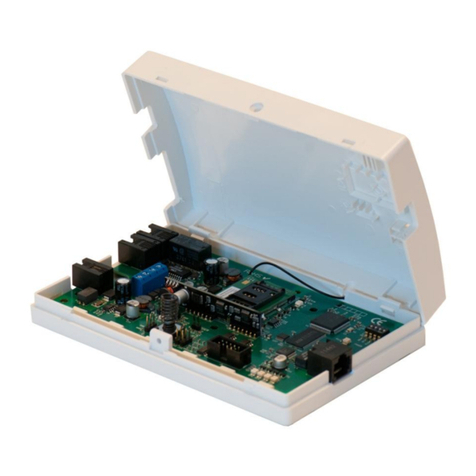
Service manual AlphaCom PSTN2IP ML transceiver Rev. 1.6 10-09-2011 Page 3/65
TABLE OF CONTENTS
INTRODUCTION...........................................................................................................................................................4
GENERAL .......................................................................................................................................................................5
SETTINGS ACCORDING TO LOCAL REQUIREMENTS...................................................................................6
Forcing an alarm message manually........................................................................................................................6
Dutch regulations AL1, AL2 and AL3....................................................................................................................6
QUICK INSTALLATION GUIDE ..............................................................................................................................8
HARDWARE INSTALLATION................................................................................................................................10
PSTN tamper loop....................................................................................................................................................10
PSTN2IP ML PROGRAMMING...............................................................................................................................13
Log in .........................................................................................................................................................................18
Ethernet Settings..........................................................................................................................................................21
Webserver configuration .........................................................................................................................................22
Transceiver settings..................................................................................................................................................23
Monitoring Settings / Fault relay............................................................................................................................26
PSTN Interface Settings ..........................................................................................................................................28
Serial port configuration..........................................................................................................................................30
Factory Defaults........................................................................................................................................................32
ALPHACOM PSTN2IP ML PROGRAMMING WITH A DTMF-TELEPHONE.............................................34
OPERATION OF THE PSTN2IP ML.......................................................................................................................37
Transceiver 1 Backup function...............................................................................................................................37
Transceiver 2 as Double report function...............................................................................................................37
PSTN back-up function ...........................................................................................................................................38
LED indications on the PSTN2IP ML...................................................................................................................38
DIPSWITCH settings of the PSTN2IP ML..........................................................................................................40
New firmware flashen in the AlphaCom PSTN2IP ML (bios flash)................................................................41
APPENDIX A: Installing the FLASH software........................................................................................................48
APPENDIX B: DHCP server reservations................................................................................................................55
APPENDIX C: Cable wiring.......................................................................................................................................57
APPENDIX D: Reserved Port numbers.....................................................................................................................58
APPENDIX E: Explanatory notes ..............................................................................................................................59
APPENDIX F: Compatible control panels................................................................................................................62
APPENDIX G SIA-codes ............................................................................................................................................63
APPENDIX H: Release notes......................................................................................................................................64
REGISTER.......................................................................................................................................................................64
FIGURES
Figure 1: PSTN2IP ML transceiver..........................................................................................................4
Figure 2: PSTN2IP ML circuit board layout...........................................................................................10
Figure 3: Schematics PSTN tamper loop................................................................................................11
Figure 4: Jumper for PSTN tamper loop.................................................................................................11
Figure 3: LED and connector locations ..................................................................................................38
Figure 4: Connections for flash-mode (bios-update)................................................................................44
Figure 5: Jumpers in the „run-mode‟ ......................................................................................................47
Figure 4: Cross-over cable wiring..........................................................................................................57
Figure 5: Straight through cable wiring..................................................................................................57





























